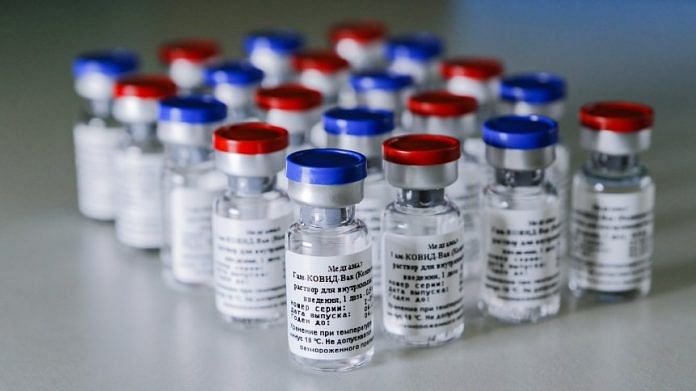When it comes to Covid-19 vaccines, a lot of attention seems to have centered on the ones being made in the West. So it may come as a surprise that Russia is fifth on the list of vaccine makers with the most doses under contract through pre-purchase agreements, according to Bloomberg’s Covid-19 Vaccine Tracker. The shot — whimsically named Sputnik V and developed by the Gamaleya institute — is just behind GlaxoSmithKline Plc and Sanofi’s candidate in the rankings and ahead of the shots developed by Moderna Inc. and Johnson & Johnson. This is notable for a vaccine that has yet to be featured in any peer-reviewed scientific journal. How do we know we can trust it?
Russia hasn’t released late-stage phase III data on its vaccine; all we have to go on are press announcements, similar to the situation with the Chinese shot made by Sinovac Biotech Ltd. The assumption is that regional health authorities have approved the Russian vaccine based on good efficacy and safety data, but there is no way of independently verifying these things without actually seeing it ourselves. That said, what we do know about Sputnik V and its design should give us some degree of confidence.
What’s known: The Sputnik V has been tested in a phase III trial involving 22,714 subjects, with three interim analyses when the number of confirmed cases reached 20, 39 and 78, respectively. While the final number of cases is lower than that in the Moderna and Pfizer Inc.-BioNTech SE vaccine trials, those were larger and conducted in the U.S., where the infection rates were rising rapidly. Efficacy at each interim analysis in the Sputnik V trial was consistently at 90% or above, based on comments in press releases. There were also no cases of severe Covid-19 in vaccinated individuals, though definitions of disease severity are not clear.
As for its design, Sputnik V was developed using the kind of advanced vaccine technology employed in shots made by the AstraZeneca-Oxford University partnership and Johnson & Johnson. These two-dose vaccines use adenoviral vectors — viruses based on the cause of the common cold that are engineered to deliver the genetic material coding for the Sars-Cov-2’s key “spike” protein, which in turn prompts the immune system to mount a response to protect against further infections.
Sputnik V has one key, clever difference from the Astra and J&J vaccines: It uses the same adenovirus as J&J for the first dose (adenovirus-26) and a different adenovirus (adenovirus-5) for the second dose. In this way, it avoids the possibility of immunity to the first dose impacting the ability of the second dose to work efficiently. One issue is that a large percentage of people have pre-existing immunity to adenovirus-5, but that’s not a huge drawback if the efficacy is very high. A potentially more promising alternative would be to try a combination of adenovirus-26 for the first shot and Astra’s adenoviral vector – made from a chimp adenovirus – for the second, which is exactly what the two groups have agreed to do in a collaboration announced on Dec.11.
Taken together, these details – even without the phase III results – give me reason to think the Sputnik V vaccine may well be as strong a candidate as the ones created in Western labs. The same can’t be said for Sinovac’s shot, CoronaVac, which is undergoing trials in Turkey, Brazil and Indonesia.
Phase III efficacy data for the CoronaVac shot has been all over the place – from 50% to more than 90% – with different numbers coming from different authorities in recent weeks. On Thursday, a Brazilian newspaper reported efficacy for the shot of 78%, adding to the confusion. This opacity does not help confidence in the vaccine. Then there is the question of the technology base. CoronaVac uses killed virus in its vaccine, mixed with a traditional adjuvant called alum. It’s similar to the shot in development by French biotech firm Valneva SE, though the latter uses a potentially more powerful adjuvant from its partnership with California-based Dynavax Technologies Corp. While both may have the theoretical advantage of inducing an immune response to other parts of the virus than just the spike protein, which is the target of most other vaccines, the choice of an old adjuvant for the Sinovac shot is not great.
At some point, I hope soon, the phase III data for the Sputnik V and CoronaVac vaccines will be published in a peer-reviewed journal so that we can make up our own minds about the robustness of their efficacy and safety. As of now, though — and based on what I know so far — if I had to choose between the two, I would opt for a ride on Sputnik rather than a trip to CoronaVac’s golden stars. –Bloomberg
Also read: Pfizer vaccine could offer protection against new Covid variant, shows study






